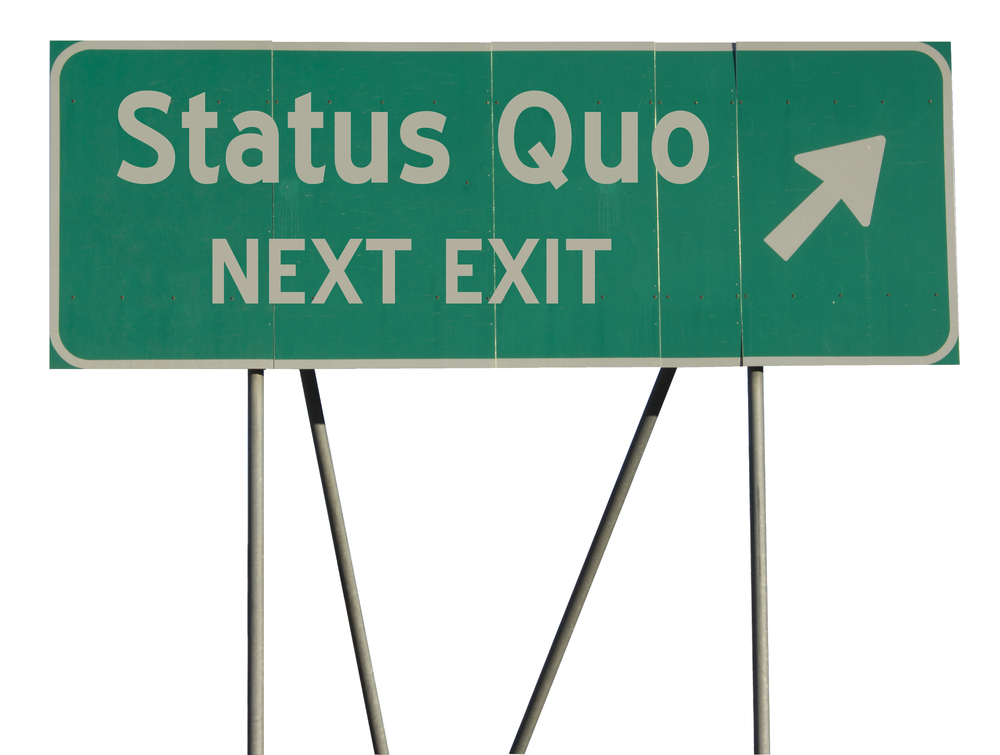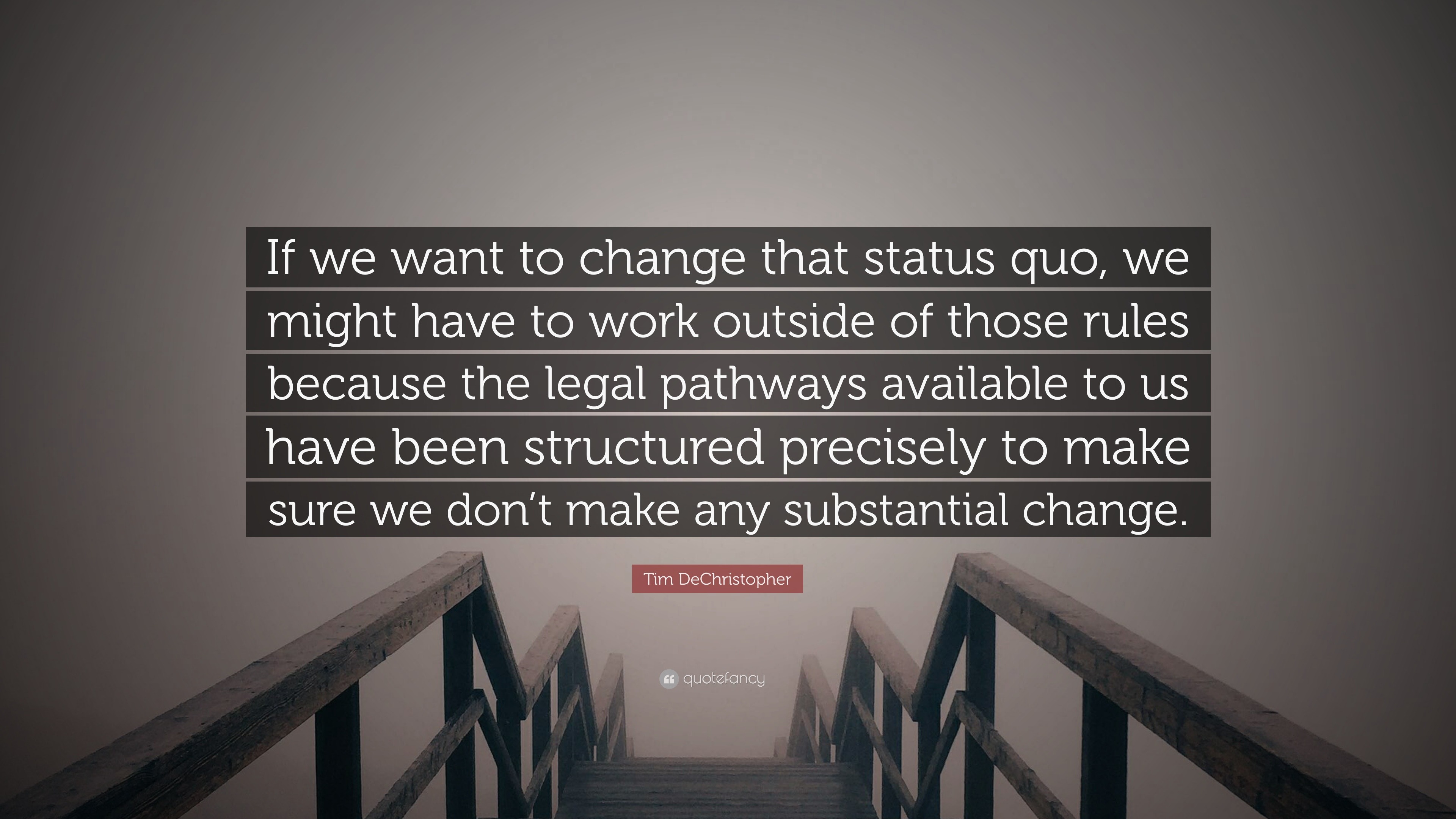Analyzing Status Quo Meaning: Its Lawful Interpretation and Practical Usage
Analyzing Status Quo Meaning: Its Lawful Interpretation and Practical Usage
Blog Article
Navigating the Dynamics of Standing Quo in Legal Systems: An Alternative Strategy
In the realm of legal systems, the concept of status quo holds a substantial duty in forming the structure whereupon laws and laws are constructed. Understanding and successfully navigating the characteristics of the status needs a holistic method that surpasses simple surface-level analysis. By diving into the detailed interplay of various factors affecting the legal status, one can discover nuanced understandings that lead the way for educated decision-making and strategic preparation. As we discover the complexities surrounding this critical aspect of lawful structures, a deeper understanding of the difficulties and opportunities that come with it emerges, prompting us to reassess standard strategies and accept a more detailed viewpoint.
The Relevance of Status Evaluation
In lawful process, conducting a thorough condition quo evaluation is paramount to understanding the existing state of affairs and offering a structure for educated decision-making. This evaluation entails a comprehensive review of existing problems, contracts, and situations that form the context within which lawful activities are being considered. By evaluating the status, attorneys can identify essential stakeholders, responsibilities and legal rights, possible dangers, and possibilities for resolution.
Furthermore, delving into the status helps with the identification of any kind of voids or inconsistencies that may exist, clarifying areas that call for attention or information. This process help in establishing reasonable expectations and creating techniques that line up with the prevailing circumstances. Understanding the condition quo is vital for creating a roadmap that overviews legal process in the direction of effective outcomes while lessening unintentional repercussions.
Eventually, a precise status quo evaluation acts as a cornerstone for sound legal recommendations and strategic preparation. It makes it possible for legal practitioners to browse intricacies, anticipate challenges, and tailor their method to attain desirable results for their customers.
Aspects Affecting Lawful Condition Quo
Considering the intricate web of laws, regulations, and social norms, what are the main factors that shape and affect the legal status quo in modern lawful systems? Numerous crucial variables play essential duties in identifying the lawful condition quo within a legal system. In addition, political dynamics and the equilibrium of power within a lawful system can heavily affect the legal standing quo.
Techniques for Status Quo Administration
Effective management of the legal condition quo calls for a critical technique that recognizes the vibrant nature of legal systems and the diverse factors affecting them. One crucial technique for standing quo monitoring is routine tracking and evaluation of legal advancements. This entails remaining upgraded on new laws, policies, and judicial decisions that can impact the existing lawful landscape. By proactively monitoring these changes, legal experts can expect potential difficulties and adjust their strategies appropriately.
In addition, effective interaction and collaboration amongst stakeholders are important approaches for handling the status in legal systems. By cultivating open discussion and participation in between policymakers, lawful experts, and various other pertinent celebrations, potential problems can be dealt with proactively, and options can be created collaboratively to preserve a secure legal environment.
Challenges in Status Adjustment

In addition, the absence of clear standards for browsing condition quo adjustments can produce unpredictability and uncertainty. When trying to test existing standards or Find Out More integrate new legal structures, lawful professionals commonly discover themselves in uncharted region. This can bring about hesitancy and hesitation to differ familiar methods, even more hampering the adjustment process.

Implementing Alternative Strategies
Including a comprehensive point of view right into legal approaches is crucial for addressing the multifaceted challenges of modern-day legal systems. Implementing alternative strategies includes a shift towards seeing lawful issues as interconnected parts of a larger system instead than isolated cases. This requires a positive stance that thinks about not only the immediate legal implications but likewise the wider social, economic, and ethical effects of lawful choices.
One trick facet of carrying out alternative i loved this methods is promoting interdisciplinary cooperation within legal teams. By bringing together experts with varied backgrounds such as law, psychology, economics, and sociology, a much more nuanced understanding of intricate legal problems can be achieved. This joint method allows legal specialists to develop extra effective strategies that make up a variety of aspects affecting the outcomes of legal situations.
Additionally, embracing modern technology and data-driven insights is important in implementing holistic strategies in lawful systems. Leveraging devices like artificial knowledge for legal research study, predictive analytics for case outcomes, and information visualization for presenting intricate details can enhance decision-making procedures and enhance total legal end results. By integrating these technical innovations right into legal method, a more effective and alternative technique to dealing with lawful difficulties can be accomplished.
Final Thought
In verdict, browsing the characteristics of standing quo in lawful systems needs a detailed understanding of the relevance of standing quo analysis, the different aspects influencing lawful status, efficient techniques for condition quo monitoring, and the difficulties in status adjustment. Applying all natural approaches is vital for efficiently handling and adapting to the status in lawful systems. It is important for attorneys to frequently adapt and assess to the changing dynamics of the standing quo to make sure efficient and effective lawful end results.
Thinking about the elaborate internet of legislations, laws, and societal standards, what are the main factors that form and influence the lawful standing quo in contemporary lawful systems? Several vital aspects play crucial roles in figuring out the lawful condition quo within a lawful system. It is the interaction of these aspects that jointly shape and influence the legal status quo in modern legal systems.
Effective monitoring of the legal condition quo needs a strategic technique that recognizes the dynamic nature of legal systems and the varied factors influencing them.In conclusion, navigating the characteristics of status quo in legal systems needs a comprehensive understanding of the relevance of standing quo evaluation, the different factors affecting legal standing quo, efficient approaches for condition quo administration, and the difficulties in condition quo adaptation.
Report this page